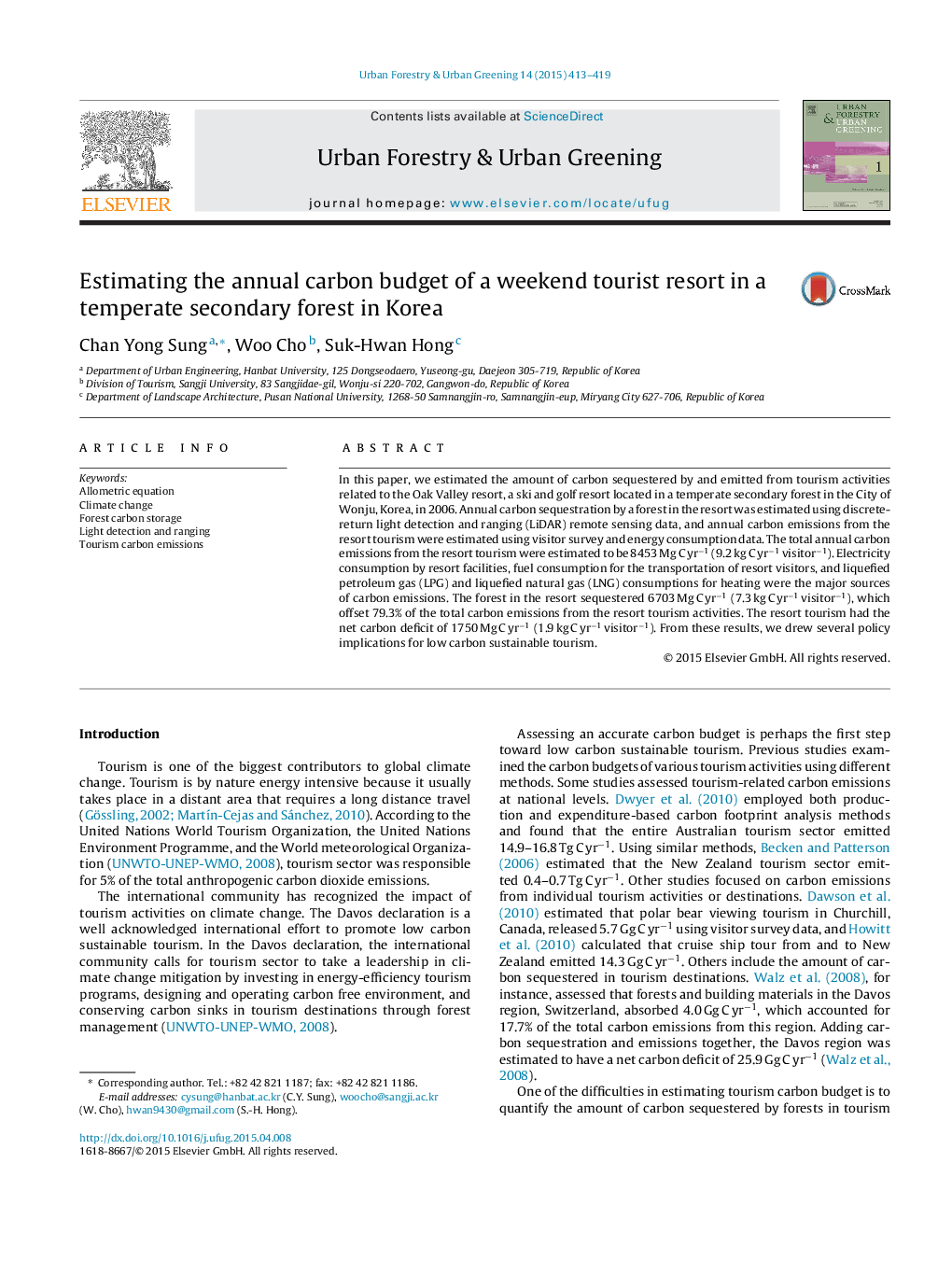| Article ID | Journal | Published Year | Pages | File Type |
|---|---|---|---|---|
| 10252154 | Urban Forestry & Urban Greening | 2015 | 7 Pages |
Abstract
In this paper, we estimated the amount of carbon sequestered by and emitted from tourism activities related to the Oak Valley resort, a ski and golf resort located in a temperate secondary forest in the City of Wonju, Korea, in 2006. Annual carbon sequestration by a forest in the resort was estimated using discrete-return light detection and ranging (LiDAR) remote sensing data, and annual carbon emissions from the resort tourism were estimated using visitor survey and energy consumption data. The total annual carbon emissions from the resort tourism were estimated to be 8453 Mg C yrâ1 (9.2 kg C yrâ1 visitorâ1). Electricity consumption by resort facilities, fuel consumption for the transportation of resort visitors, and liquefied petroleum gas (LPG) and liquefied natural gas (LNG) consumptions for heating were the major sources of carbon emissions. The forest in the resort sequestered 6703 Mg C yrâ1 (7.3 kg C yrâ1 visitorâ1), which offset 79.3% of the total carbon emissions from the resort tourism activities. The resort tourism had the net carbon deficit of 1750 Mg C yrâ1 (1.9 kg C yrâ1 visitorâ1). From these results, we drew several policy implications for low carbon sustainable tourism.
Related Topics
Life Sciences
Agricultural and Biological Sciences
Forestry
Authors
Chan Yong Sung, Woo Cho, Suk-Hwan Hong,
